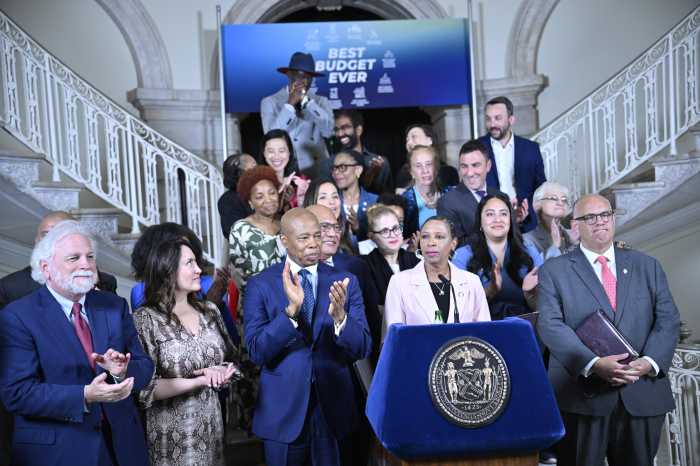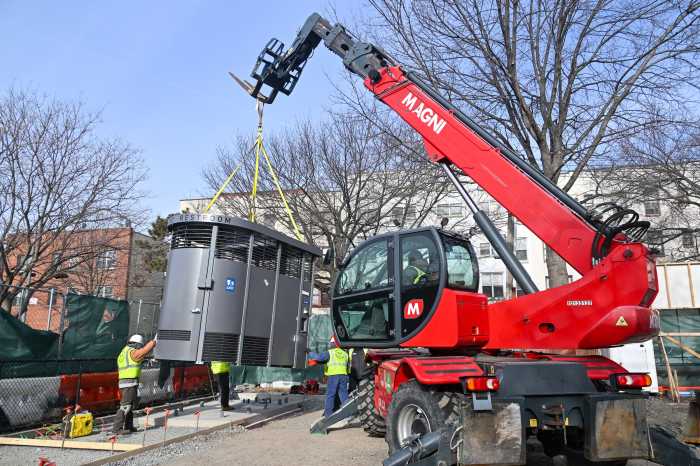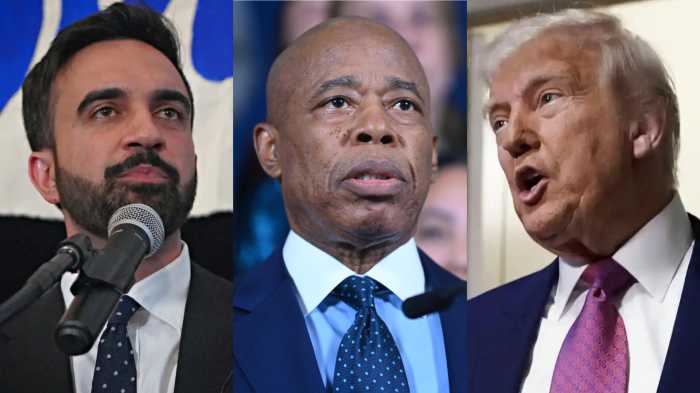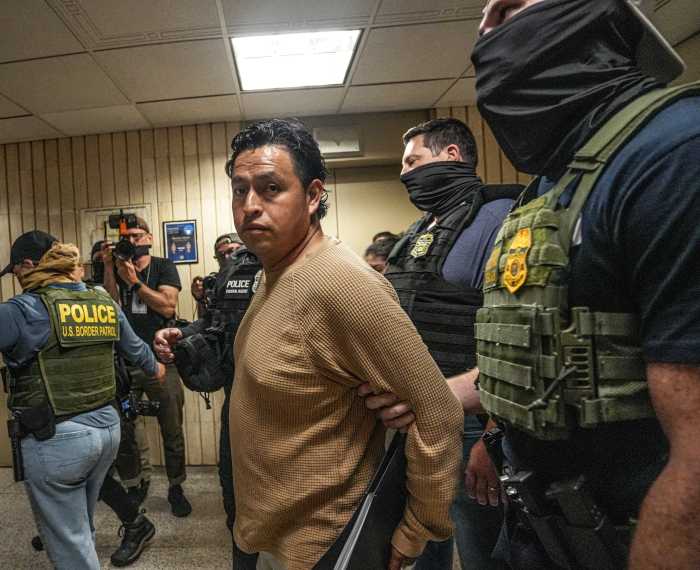Eric Gelber is hoping third time’s the charm.
The ultramarathoner is attempting to run 200 miles around Central Park this week — all in the name of finding a cure for multiple myeloma, a rare blood cancer.
Since 2007, the 49-year-old executive vice president at CBRE Real Estate in Manhattan has raised more than $800,000 for the Multiple Myeloma Research Foundation (MMRF) through more than 20 ultramarathons (anything longer than a traditional marathon, or 26.2 miles) and six marathons, including two previous 200-mile runs around Central Park. He’s hoping this weekend’s event will push him over the $1 million mark.
Gelber’s fundraiser, called Journey Towards a Cure, has drawn the attention of Tribeca Digital Studios, which is currently filming a documentary about it. His previous two Central Park runs, in 2013 and 2014, also brought out hundreds of fellow runners, and Gelber expects even more this weekend as he attempts to make it 33 times around the park for 200 miles. In his past two runs, he fell short of the goal, running 164 and 176 miles over the course of 21⁄2 days; this time, he’s determined to make it to 200.
amNewYork spoke with the Chappaqua resident about what it takes to pull off the ultramarathon.
How did you start fundraising for MMRF?
I had never done any fundraising of any kind. When I started doing it in 2007, a family friend of ours, Anita, had been living with multiple myeloma for a few years and was having a stem cell transplant. That’s what got me going. I thought I would run one marathon, show her some support, and that would be it. We raised about $6,000 that year. I thought it was important to keep running and raising awareness and trying to do my part. She was diagnosed in 2003 and passed away in 2012. There were definitely struggles along the way, but she was an amazing, amazing person.
What goes into training for something like this?
It’s kind of changed over the years. When I first started doing these, basically you’re just pounding out mileage, tons and tons of mileage. Then the key component of that for me is on weekends, when my training was at its peak, I would run for 6-plus hours, so I’d be doing 30 some-odd miles each day. I was running over 90 miles a week. But now, as I’ve gotten older, I’ve been changing my training. It just beats me up too much, but it also made me realize you can accomplish these really long distances without running every day. So now I run three days a week, my peak mileage was probably in the 50s. That’s just with one long run a week at 30-plus miles. I do a lot of different cross-training — endurance training at the gym, strength training, cycling, swimming, I’m all over the map. I’m in much better shape overall than I was when I first started and all I did was run. I’ve had several surgeries over the years — foot surgery in 2011, hernia surgery in 2014 and hip surgery this past December — that’s one of the reasons I’ve reduced my running. I’m trying to not keep doing that.
What keeps you at this considering the toll it’s taken?
I’m just very passionate about doing whatever I can to help find a cure for multiple myeloma. And since I’m able to run, and run far, that’s what we’ve come up with. I think it’s a really great idea to bring awareness and raise a lot of money. Until people stop giving, I’ll keep doing it. Every year we seem to raise more and more money and awareness to MMRF. That’s what keeps me at it. That, and I also made many, many friends over the years [with multiple myeloma], some that we’ve lost and others that are still here, so I do it for them.
What is your route?
I’m doing the outer loop, the long loop — 6.1 miles. I’m in the park except between 1 and 6 a.m., because the park actually closes. Between 1 and 6 I’m running on the perimeter of the park. We had to figure out a way to not stop. It is a nonstop effort. I definitely take a few breaks, but they’re very short. It’s not more than an hour’s sleep total. At night it’s really hard for me to stay awake, I’ll fall asleep on my feet. It’s kind of like if you’re on a road trip and getting tired behind the wheel, you pull over at a rest stop and sleep for 10 minutes and then you’re fine. It’s kind of like that, just hurts a little more.
What do you do for fuel?
I pretty much eat on the run. While I’m on my loops, I’ve always got a bottle of water that has a powder that I use mixed into my water to get some calories. Every time I come back to Engineers’ Gate, where our base camp is, I might grab a bite of something — a piece of cantaloupe, or a slice of salami or chips. It depends on my mood. We have a lot of different things to choose from. I love chocolate cake donuts, they’re my favorite. This year on my long runs I started stopping at 7-Eleven and grabbing Slurpees, that’s my new favorite.
What do you do during the run? Do you talk with fellow runners or listen to music?
It’s a little bit of everything. I definitely want to speak with people who are coming out to run with me. A lot of people I’ll know, but there’s going to be a lot of people that I don’t know. I want to hear their stories and get to know them. I try to chat with them as much as I can, but I usually try to get that out of the way in the early part of each loop. It gets tiring to talk and run. When I really need to just zone out and focus, then I put on music. Some of my daughter’s top 40 stuff will pop up on my shuffle. I need Pearl Jam, Metallica, Dave Matthews, I’m all over the board.
What kind of gear do you need at your base camp?
We have a lot of stuff. We have multiple coolers with everything from ice to water to food to other drinks. It’s supporting me, but I have a crew of people that I have to feed also. We have gear for every type of weather. It’s rained out there both years I’ve been there. I need stuff if it’s cold, I need stuff if it’s hot — jackets, long sleeves, gloves, arm sleeves, different hats for different temperatures, shorts, long pants, sunscreen, sunglasses. I have a medical kit, which is not as dramatic as it sounds — mostly for blister care. I have four or five pairs of shoes, a dozen pairs of socks, two-way radios so the crew can communicate while we’re out on a loop. Tents, tables, reflective gear, flashlights for me when I’m out running when it’s dark — I prefer the handheld ones. The beauty of doing this in the city though is we don’t stress too much. If we’re missing or run out of something, you can pretty much get anything anywhere, any time. I’m not in the middle of the desert.
What has this experience been like over the years?
It has been amazing. The progress in terms of treating this disease has been incredible. The life expectancy over the last 10 years has changed for the better. People, for the most part, are living longer, in a good way. I love to see and hear that. Then on a personal note, I’ve met so many amazing people, some with multiple myeloma, others not. My family and I have made a lot of great friends through all of this, so that’s a special and unexpected outcome. You go into something to raise money and support one friend and come out of it part of a bigger community of people.
What do you want people to know about the disease and foundation?
I’m hoping that people see the amazing work that the MMRF is doing. They’re been responsible for bringing 10 new drugs to market, which is a tremendous success rate, since they’ve been around. I think it’s important No. 1 for people to understand that there’s no cure for the disease, but there’s great progress being made. If we all band together as a community and continue to push to raise money, raise awareness, I really believe that we’ll find a cure.
IF YOU GO
The Journey Towards a Cure, Eric Gelber’s 200-mile run through Central Park, begins Sept. 16 at 8 a.m. at Engineers’ Gate, 90th Street and Fifth Avenue, and goes until Sept. 18. To register to run or to donate, visit themmrf.org/thejourney.





































